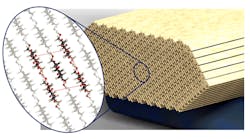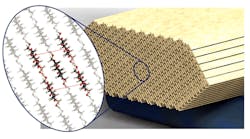Cellulose nanocrystals from plant life could lead to stronger materials
Material engineers at Purdue University are developing methods to use the nanocrystals that naturally give cellulose in trees and plants strength, lightweight, and resilience to strengthen construction materials and automotive components. Researchers modeled the nanocrystal’s atomic structure and calculated it to have a stiffness of 206 gigapascals, comparable to that of steel. The crystals measure 3 × 5 nm, making them too small to study using light microscopes.
Researchers say that these cellulose nanocrystals could become the green alternative to carbon nanotubes for reinforcing materials such as polymers and concrete. The crystals could also be used in biodegradable plastics, textiles, wound dressings, and a host of other products. The crystals could be developed from cellulose sources such as trees, plants, algae, oceangoing organisms (tunicates), and bacteria. The advantages of the cellulose material are that it is renewable, biodegradable, and carbon neutral.
Developing and processing the new materials would also be a natural outgrowth of the paper and biofuels industry, so there are already well-established technologies. For example, by-products from the paper industry are currently used to make biofuels. By adding another process, the leftovers could be turned into composite materials.

